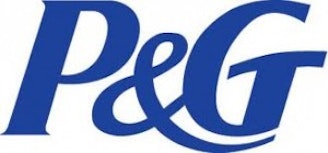
Its current dividend yield is 3% and with a payout ratio of 54%, P&G has the capability of significantly boosting its dividend. The Procter & Gamble Company (NYSE:PG) has averaged an annual dividend increase of 10.8% per year over the last 20 years. However, its dividend increase average has dropped to 8.5% over the last five years and P&G’s most recent dividend increase announced in February was only 7%.
A 7% dividend increase is better than most, but the issue is that the level of P&G’s dividend increase has declined each of the last five years. This downward trend of dividend increases is a red flag indicating that The Procter & Gamble Company (NYSE:PG)’s business model may have some problems and that investors should reevaluate the company to determine if it deserves a spot in their portfolio.
Procter & Gamble is not the only blue-chip company with declining dividend increases. Healthcare giant Johnson & Johnson (NYSE:JNJ) has also lowered its level of dividend increases over the last several years.
Johnson & Johnson (NYSE:JNJ) has increased its annual dividend an average of 12.6% over the last 20 years but over the last five years has only averaged an increase of 8%. Johnson & Johnson (NYSE:JNJ) currently yields 2.9% and will be announcing its next dividend increase within the next month. With a payout ratio of 61%, I am hopeful for an improvement over their last two dividend increases of 7% and 5.5%.
Wal-Mart Stores, Inc. (NYSE:WMT), on the other hand, recently came through with an impressive dividend increase of 16%, which boosted its yield up to 2.4%. Wal-Mart Stores, Inc. (NYSE:WMT)’s annual dividend increases have averaged 18.8% over the last 20 years and 14.7% over the last five years. With a payout ratio of only 31%, Wal-Mart Stores, Inc. (NYSE:WMT)’s dividend excellence should continue well into the future.
Is Procter & Gamble a worthy candidate for your portfolio?
The Procter & Gamble Company (NYSE:PG) is a consumer-products powerhouse with 2012 sales of $83.7 billion. Its very impressive group of brands include 25 blockbusters with annual sales of more than $1 billion. P&G’s earnings have been flat over the past five years, which I suspect is the main reason for its reduced level of dividend increases. The following points illustrate why P&G’s earnings have struggled:
Economic conditions during the great recession were brutal and the recovery has been very slow.
Generic products that compete with P&G’s brands are available at much lower prices.
Although the quality of P&G’s products are much better, some consumers are forced to buy the generic products due to the poor economy.
There were a series of circumstances beyond The Procter & Gamble Company (NYSE:PG)’s control that negatively affected earnings, such as increases in material costs and higher tax rates.
Additional investments have been made in an effort to expand opportunities in emerging markets. These investments should pay off in the long term but have negative effects over the short term.
P&G is focused on providing the highest quality and most innovative products available today. This requires extensive R&D costs, which can have a detrimental short-term effect on earnings.
The Foolish bottom Line
After taking all of these points into consideration, I believe that most of these items that are out of Procter & Gamble’s control will improve over time and that their investments in emerging markets and product innovation will pay off.
This belief was reflected in P&G’s 2Q and 3Q earnings reports, which were both improvements over last year’s results. However, its 4Q guidance was lower than analysts expected, resulting in a 6% decline in the share price. With shares at an all-time high, a pullback of this level is not surprising. After these improved results, I am hopeful for an improvement in The Procter & Gamble Company (NYSE:PG)’s dividend boosts in upcoming years.
After this sell-off, I believe that now is a good time to consider Procter & Gamble as part of a diverse, well managed portfolio.
The article Assessing P&G’s Declining Level of Dividend Increases originally appeared on Fool.com and is written by Greg Williamson.
Copyright © 1995 – 2013 The Motley Fool, LLC. All rights reserved. The Motley Fool has a disclosure policy.